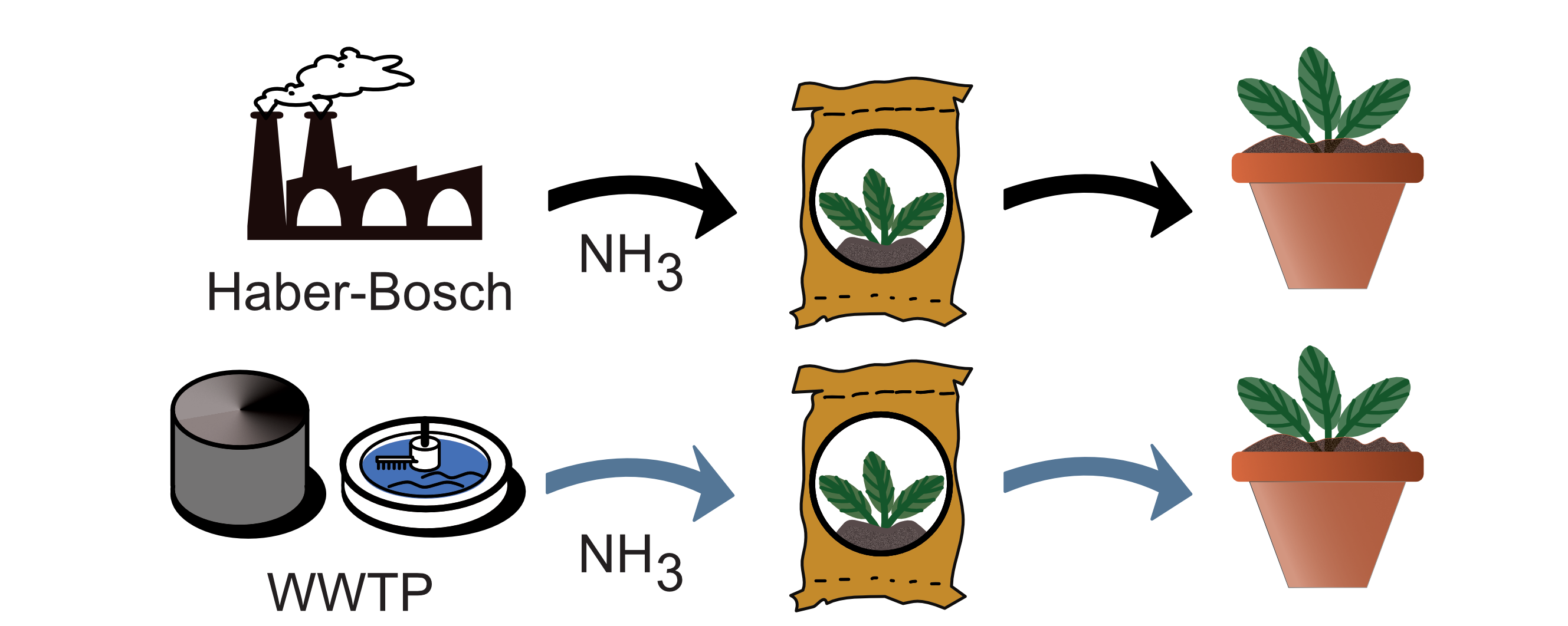
Application of ammonium fertilizers recovered by an Electrochemical System
Authors: Mariana Rodrigues a,b, R. Jensen Lund a, Annemiek ter Heijne b, Tom Sleutels a, Cees J. N. Buisman a,b, Philipp Kuntke a,b *
a Wetsus, European Centre of Excellence for Sustainable Water Technology, Oostergoweg 9, 8911MA Leeuwarden, The Netherlands
b Environmental Technology, Wageningen University, Bornse Weilanden 9, P.O. Box 17, 6700 AA Wageningen, The Netherlands
Published in: Resources, Conservation and Recycling Volume 181, June 2022, 106225
Abstract:
Nitrogen (N) is an essential nutrient for plants and plays an important role in agriculture. However, the cycle between nitrogen input into agriculture and the nitrogen content in wastewater has been broken. Recently, nitrogen recovery from wastewater was demonstrated using an electrochemical system (ES) combined with a gas permeable membrane. Once concentrated, the ammonia is recovered into an acid, producing either ammonium sulfate (AS) or ammonium nitrate (AN). The ES was operated at different conditions while guaranteeing a certain nutrient removal and producing a concentrated fertilizer. An ammonium nitrate with 25.5 gN/L and an ammonium sulfate with 21.5 gN/L were recovered. To evaluate the performance of these nitrogen fertilizers, 5 treatments were applied to two crops, spinach and radish. The treatments were (1) AS recovered with the ES, 2) commercial AS, 3) AN recovered with the ES, 4) commercial AN, and 5) no addition (control). Between fertilized treatments, a significant difference was observed for fresh biomass of spinach leaf (consumable part of the crop) between recovered and commercial fertilizers. Effective fertilization was confirmed by a significantly higher fresh biomass in fertilized crops, both radish and spinach, compared to control. After harvest, soil pH was above 5.0 for both commercial and recovered fertilizers, despite the low pH of the recovered fertilizers (pH 1.8 – 2.4). This work demonstrates that fertilizers recovered by electrochemical systems can be used to improve crop growth and are a feasible alternative to commercial fertilizers.
Download: link to pdf
DOI: 10.1016/j.resconrec.2022.106225
License: CC-BY
